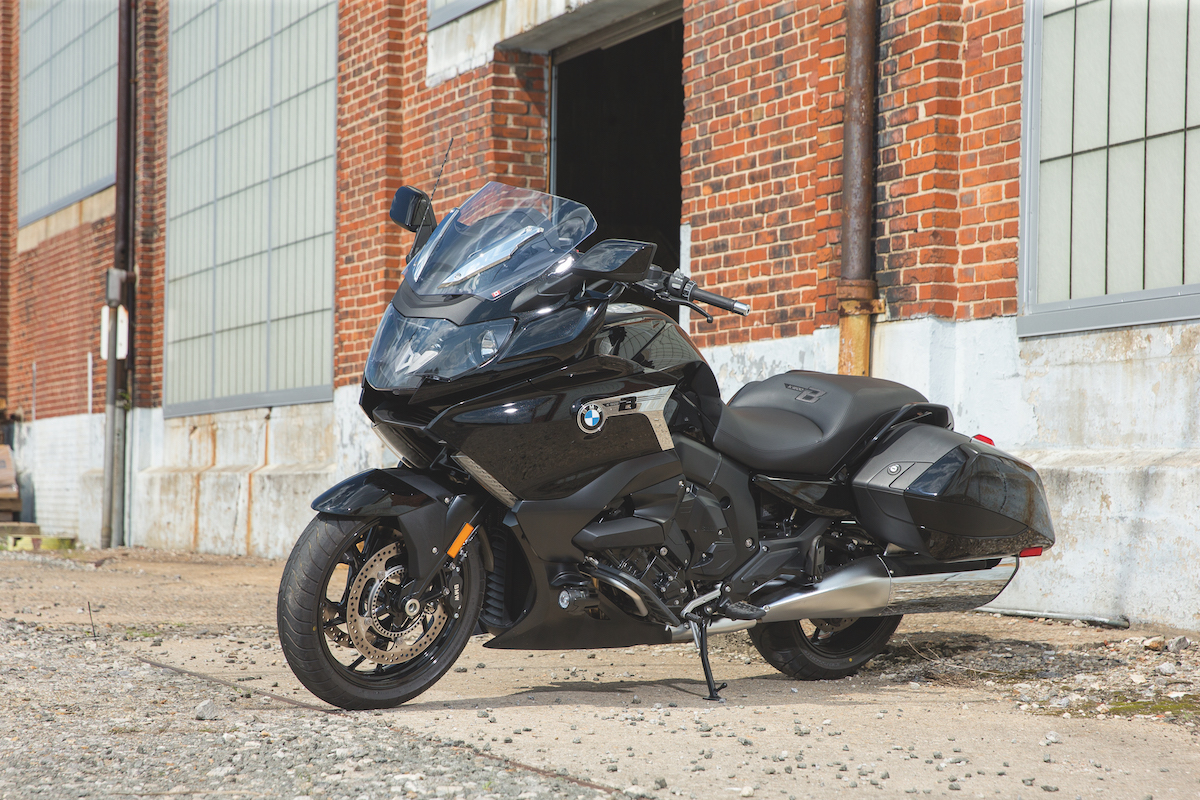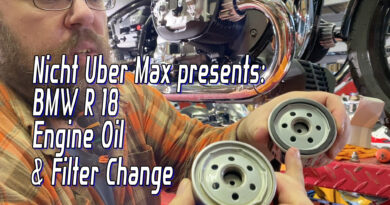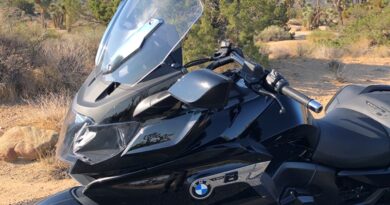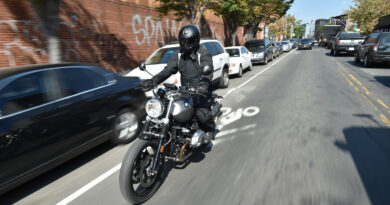BMW’s Bagger: The K 1600 B
Photos by Kevin Wing
Close your eyes. Picture the kind of motorcycle they call a “bagger.” You probably see something close to the ground, long, sleek and shiny. Acres of chrome. Maybe apehanger handlebars, maybe not. Hard cases that complement the lines of the bike, but no trunk. Forward controls stretched out past the front of the engine. A pair of fat exhaust pipes with open mufflers letting people for miles around know the bearded guy wearing jeans, engineer boots and a leather vest riding it is a badass.
As any number of mystic gurus might advise, when it comes to understanding BMW’s entrance into the bagger genre, you must unlearn everything you know—or think you know, for that matter.
Check out our first video podcast and get a better look at the Bagger.
The unlearning started in late August when BMW Motorrad hosted its press launch event for the K 1600 B at the Biltmore Estate in Asheville, North Carolina. Asheville is in the western end of the state, less than an hour from Tennessee and South Carolina, and not far from Virginia; all four states boast access to some of the greatest riding roads east of the Mississippi River, including the Blue Ridge Parkway and dozens of other popular routes.
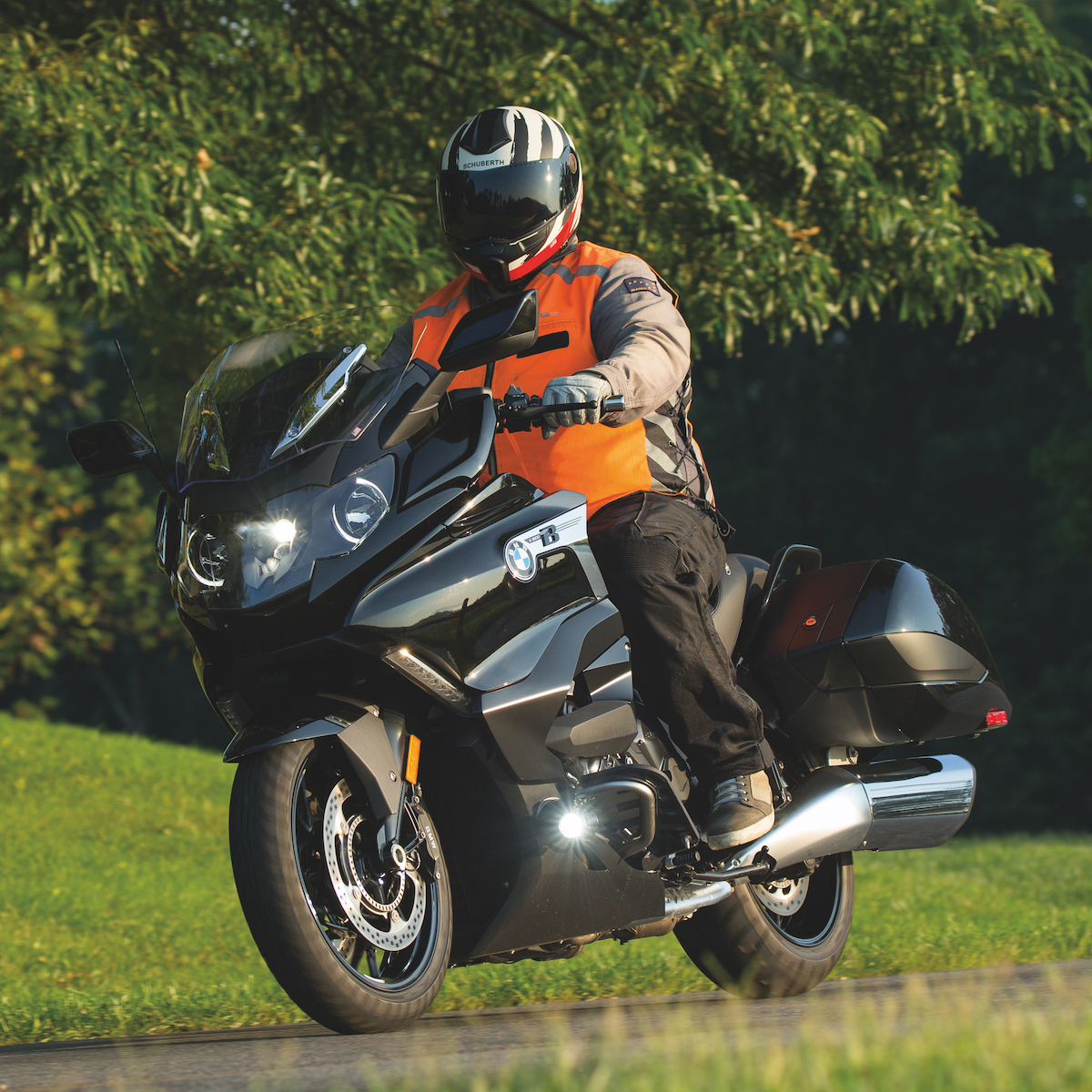 Over the course of two days of riding, journalists from a dozen states and a handful of countries racked up hours in the saddles of their baggers, exploring everything from interstate highways to one access road that could only generously be called such by exercising one’s imagination. Along the way, we experienced every kind of riding from high-speed getting-down-the-road to sitting and sweating in stop-and-go traffic.
Over the course of two days of riding, journalists from a dozen states and a handful of countries racked up hours in the saddles of their baggers, exploring everything from interstate highways to one access road that could only generously be called such by exercising one’s imagination. Along the way, we experienced every kind of riding from high-speed getting-down-the-road to sitting and sweating in stop-and-go traffic.
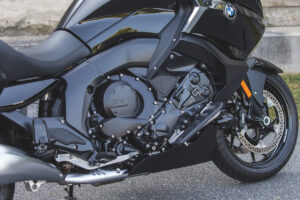 BMW’s brand-new K 1600 B is indeed close to the ground, 2.8 inches closer to the ground than its sister, the K 1600 GT. It is long, sleek and shiny. There are hard cases on either side that complement the lines of the bike and a pair of fat exhaust pipes. There are a few chromebits—especially obvious are the mufflers on either side, tucked in tight below the hard cases—and more are available for aftermarket customizing. In place of forward controls are floorboards that cover crash protection bars and which can be replaced with storage compartments if you don’t want them. The tubular handlebar looks like a drag-style bar, wide and flat, and connects to the triple clamp with an oval loop.
BMW’s brand-new K 1600 B is indeed close to the ground, 2.8 inches closer to the ground than its sister, the K 1600 GT. It is long, sleek and shiny. There are hard cases on either side that complement the lines of the bike and a pair of fat exhaust pipes. There are a few chromebits—especially obvious are the mufflers on either side, tucked in tight below the hard cases—and more are available for aftermarket customizing. In place of forward controls are floorboards that cover crash protection bars and which can be replaced with storage compartments if you don’t want them. The tubular handlebar looks like a drag-style bar, wide and flat, and connects to the triple clamp with an oval loop.
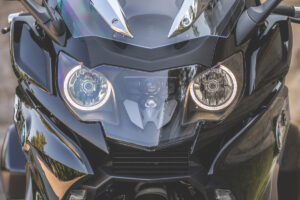 Despite the frame getting nearly three inches closer to the ground, the K 16 B has just ten millimeters less ground clearance than the K16GT, so you needn’t worry about bottoming out on rough roads, potholes or speedbumps. With ESA and all the suspension modes available—Road or Cruise for rider, rider + luggage or two-up—the Bagger’s suspension is as refined as anything BMW Motorrad has offered.
Despite the frame getting nearly three inches closer to the ground, the K 16 B has just ten millimeters less ground clearance than the K16GT, so you needn’t worry about bottoming out on rough roads, potholes or speedbumps. With ESA and all the suspension modes available—Road or Cruise for rider, rider + luggage or two-up—the Bagger’s suspension is as refined as anything BMW Motorrad has offered.
As a matter of fact, the whole motorcycle is packed with the kind of technology that modern BMW motorcycle riders have come to expect. Dynamic traction control (DTC) keeps the driveline tamed in slippery conditions. Fuel injection mapping provides throttle response ranging from slightly soft (Rain mode), to crisp (Road) and even immediate (Dynamic). ABS Pro means the rider has access to anti-lock braking even when the bike is leaned over. Shift Assist Pro means never having to use the clutch unless you want to. Even the radio is high tech, with Bluetooth connectivity (for helmets) and a USB jack (for your phone or MP3 player) tucked into one of the side cases.
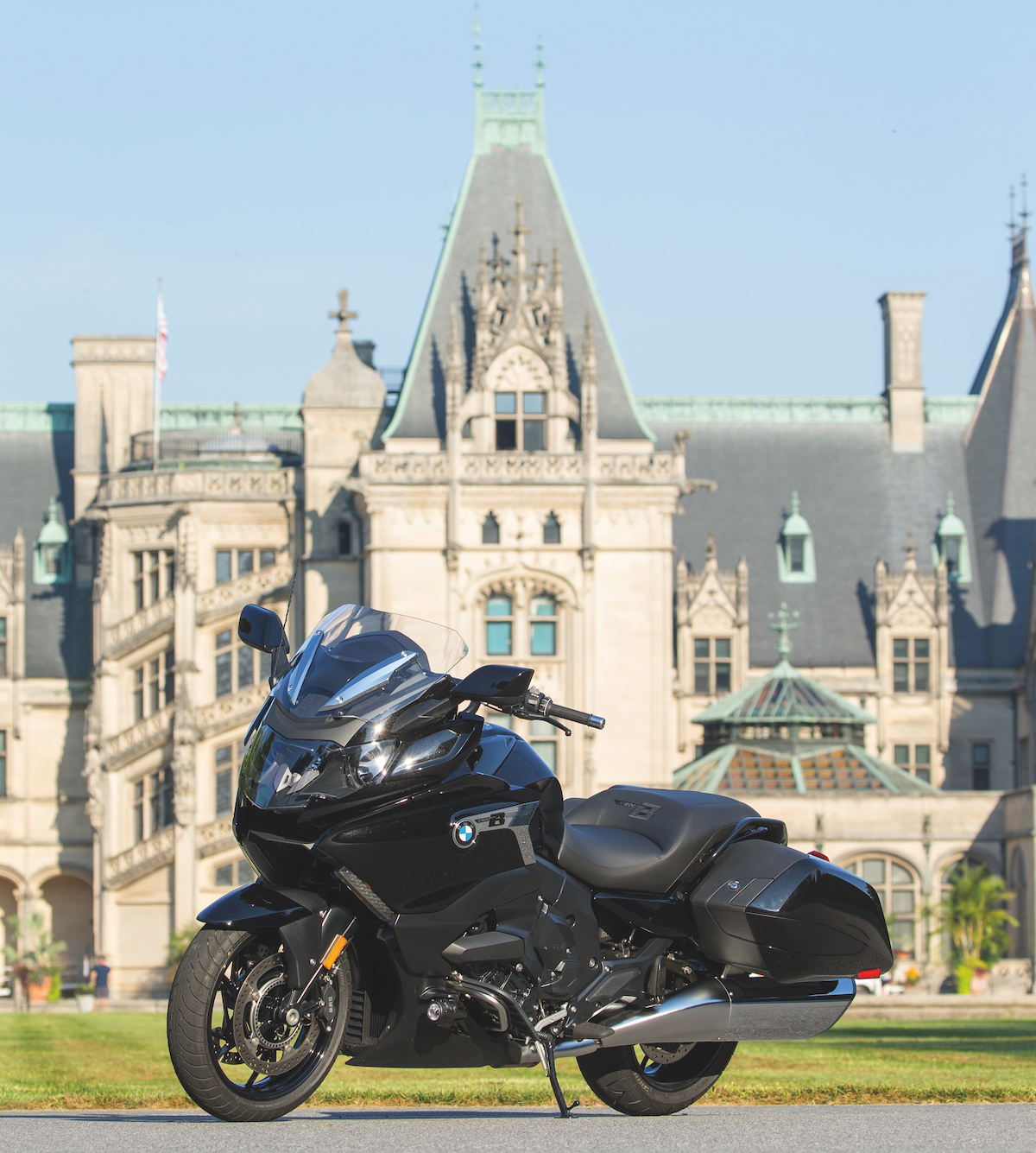 It’s this technological wow factor that has some asking hard questions about the appeal of this motorcycle. Baggers do not traditionally have this refined level of electronic wizardry, and riders looking to cross over from other brands may find themselves intimidated by all the menus and settings available. Reading the owner’s manual should be a critical step in the ownership of a BMW motorcycle, something riders who have never owned one may not grasp immediately.
It’s this technological wow factor that has some asking hard questions about the appeal of this motorcycle. Baggers do not traditionally have this refined level of electronic wizardry, and riders looking to cross over from other brands may find themselves intimidated by all the menus and settings available. Reading the owner’s manual should be a critical step in the ownership of a BMW motorcycle, something riders who have never owned one may not grasp immediately.
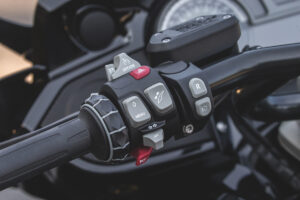 When it comes to the looks of the Bagger, so far BMW riders seem to be polarized, with a love it or hate it division emerging. The Big B is deep within the acceptable styling of the target model, the bagger. The only thing about it that doesn’t look traditionally bagger-styled is the inline six-cylinder engine and aluminum frame spar coming down from the tank. It may not have a traditional batwing-type fairing, but the lines of the front are solidly within the realm of baggerdom.
When it comes to the looks of the Bagger, so far BMW riders seem to be polarized, with a love it or hate it division emerging. The Big B is deep within the acceptable styling of the target model, the bagger. The only thing about it that doesn’t look traditionally bagger-styled is the inline six-cylinder engine and aluminum frame spar coming down from the tank. It may not have a traditional batwing-type fairing, but the lines of the front are solidly within the realm of baggerdom.
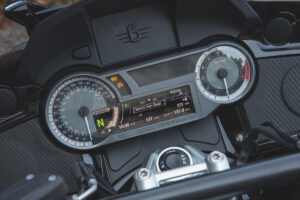 If the technology intimidates riders of other brands of baggers and the looks intimidate people who already own BMW motorcycles, who is the target market for this motorcycle? All of those people and more. The rider who loves his V-twin bagger for an evening dinner meet-up with his chrome-polishing buddies will benefit from having a K 16 B in his garage for when he wants to go on a longer trip for the weekend or more. He can load up the side cases (which have the same capacity as the ones on the GT/GTL, 37 liters), strap down a bag behind him, and ride to meet his friends on the other side of the country. Similarly, the rider who has an F 700 GS already for general all-around riding may find himself or herself desiring something a little bigger, a little smoother for those longer trips that don’t involve any dirt or gravel roads. He or she can set off on the Bagger and put in a 500-mile day, arriving ready for whatever the evening presents.
If the technology intimidates riders of other brands of baggers and the looks intimidate people who already own BMW motorcycles, who is the target market for this motorcycle? All of those people and more. The rider who loves his V-twin bagger for an evening dinner meet-up with his chrome-polishing buddies will benefit from having a K 16 B in his garage for when he wants to go on a longer trip for the weekend or more. He can load up the side cases (which have the same capacity as the ones on the GT/GTL, 37 liters), strap down a bag behind him, and ride to meet his friends on the other side of the country. Similarly, the rider who has an F 700 GS already for general all-around riding may find himself or herself desiring something a little bigger, a little smoother for those longer trips that don’t involve any dirt or gravel roads. He or she can set off on the Bagger and put in a 500-mile day, arriving ready for whatever the evening presents.
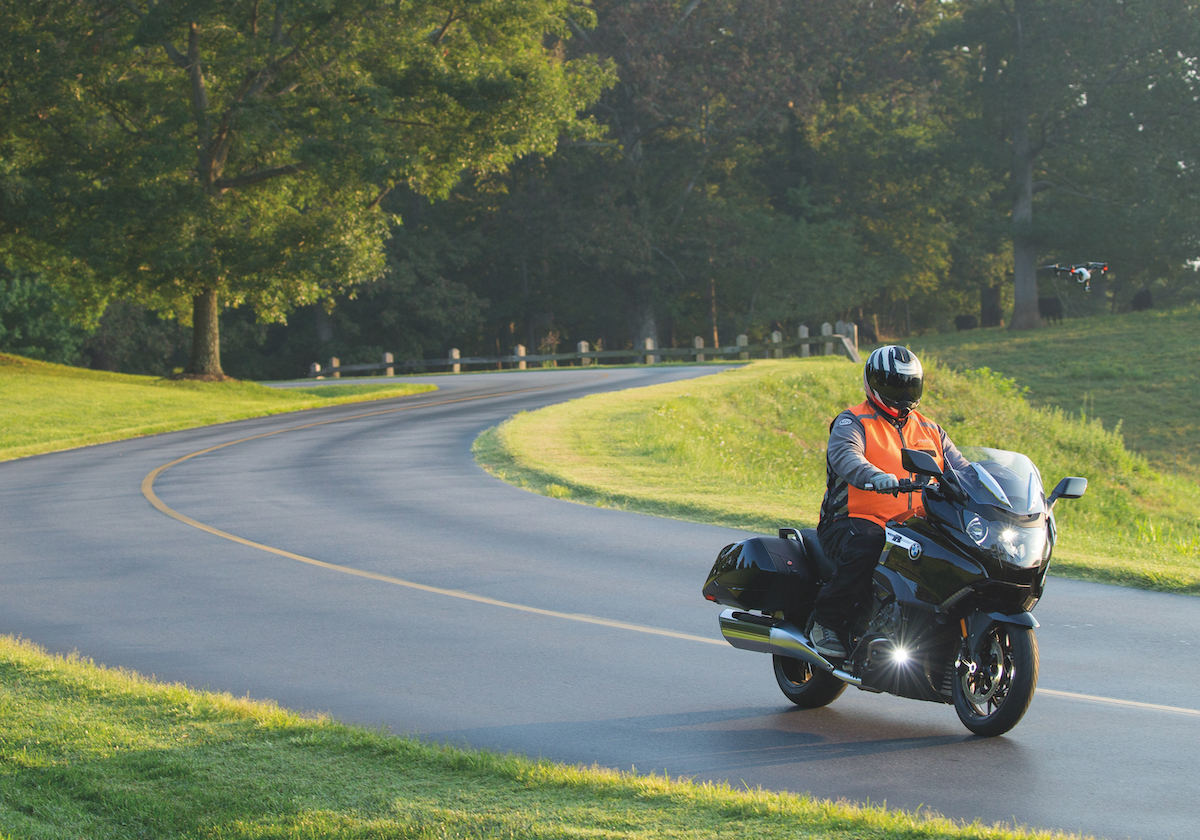 From a drive train standpoint, the Bagger is all K 1600. The smoothness of the inline-six engine is there; there is simply no vibration that makes it through to the hand grips or foot pegs (or boards). Proper clutch technique and appropriate use of Shift Assist Pro results in no driveline lash, though downshifting with SAP can be a bit abrupt and even jolting, depending on your speed and how fast you’re trying to stomp down through the gears. That same K 1600 engine that powers the GT and GTL is powering the B, and it’s everything you expect.
From a drive train standpoint, the Bagger is all K 1600. The smoothness of the inline-six engine is there; there is simply no vibration that makes it through to the hand grips or foot pegs (or boards). Proper clutch technique and appropriate use of Shift Assist Pro results in no driveline lash, though downshifting with SAP can be a bit abrupt and even jolting, depending on your speed and how fast you’re trying to stomp down through the gears. That same K 1600 engine that powers the GT and GTL is powering the B, and it’s everything you expect.
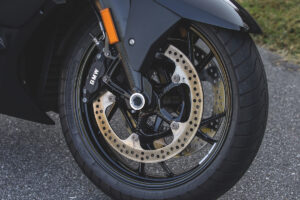 The major difference, then, is in the ergonomics of the motorcycle. The K 16 B is unlike any other motorcycle BMW has ever made. BMW’s oft (and unfairly, if you ask me) maligned R 1200 C and CL motorcycles had forward controls. Rather, they had controls as far forward as you might be able to get the controls with a boxer engine. Without protruding cylinders, there’s nothing here preventing the existence of forward controls, but BMW avoided them, perhaps understanding that having two places to put your feet is better than locking them into one location on a motorcycle of this style. The floorboards are placed well from an ergonomic standpoint, and switching from the pegs to the boards shifts where the rider’s weight sits on the seat, trading one set of pressure points for another.
The major difference, then, is in the ergonomics of the motorcycle. The K 16 B is unlike any other motorcycle BMW has ever made. BMW’s oft (and unfairly, if you ask me) maligned R 1200 C and CL motorcycles had forward controls. Rather, they had controls as far forward as you might be able to get the controls with a boxer engine. Without protruding cylinders, there’s nothing here preventing the existence of forward controls, but BMW avoided them, perhaps understanding that having two places to put your feet is better than locking them into one location on a motorcycle of this style. The floorboards are placed well from an ergonomic standpoint, and switching from the pegs to the boards shifts where the rider’s weight sits on the seat, trading one set of pressure points for another.
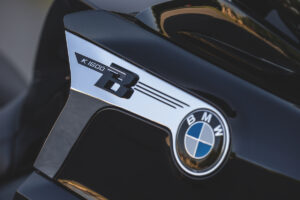 The seat on the K16B is my only real beef with the bike. I opted for the factory tall seat for the two-day press event, and I’m glad that I did, as the hip and knee angles when my feet were on the pegs were a little sharp. Not uncomfortably so, but I am only about 6’ 3” with my riding shoes on. Anybody taller than I am may find themselves a little cramped. That feeling will go away by moving the feet out to the floorboards, but then, of course, there are no controls out there, which forces the rider to abandon the boards to shift or use the rear brake. It is not a difficult motion to get used to, as everything is intelligently placed, but it is something that some riders may not be comfortable with. Between the two positions available (low/high) for either the tall or standard seat, then, the K 16 B can easily fit riders from just over five feet tall to over six feet tall—no doubt the vast majority of riders.
The seat on the K16B is my only real beef with the bike. I opted for the factory tall seat for the two-day press event, and I’m glad that I did, as the hip and knee angles when my feet were on the pegs were a little sharp. Not uncomfortably so, but I am only about 6’ 3” with my riding shoes on. Anybody taller than I am may find themselves a little cramped. That feeling will go away by moving the feet out to the floorboards, but then, of course, there are no controls out there, which forces the rider to abandon the boards to shift or use the rear brake. It is not a difficult motion to get used to, as everything is intelligently placed, but it is something that some riders may not be comfortable with. Between the two positions available (low/high) for either the tall or standard seat, then, the K 16 B can easily fit riders from just over five feet tall to over six feet tall—no doubt the vast majority of riders.
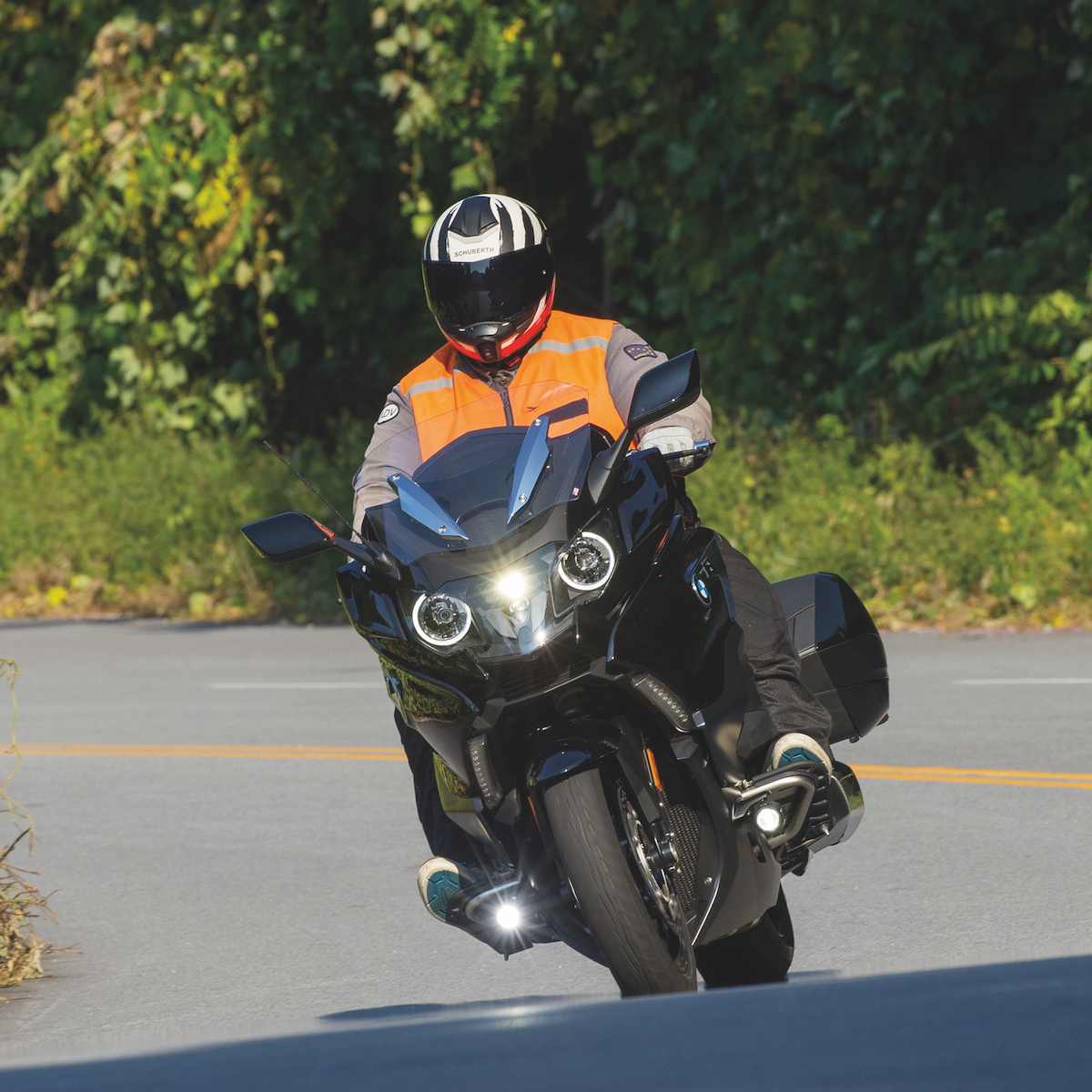 I can’t blame BMW too much for a seat causing butt-burn after several hours on the road. My rear end has never met a stock BMW seat that it likes, and I am constantly on the search for the perfect seat for my backside. By the end of the first day of riding, I was ready to get off the bike, and by the end of the second day, I decided that if I ever buy a Bagger (and I would dearly love to) my first and possibly only aftermarket purchase for the bike will be a seat that conforms more to what I prefer.
I can’t blame BMW too much for a seat causing butt-burn after several hours on the road. My rear end has never met a stock BMW seat that it likes, and I am constantly on the search for the perfect seat for my backside. By the end of the first day of riding, I was ready to get off the bike, and by the end of the second day, I decided that if I ever buy a Bagger (and I would dearly love to) my first and possibly only aftermarket purchase for the bike will be a seat that conforms more to what I prefer.
I spent those two days on the bike searching desperately for something to dislike, only to come up short on everything but the seat. Handlebar reach – perfect. Dash – bright, packed with information and viewable in direct sunlight. Throttle – responsive to a T. Brakes – fantastic. Windshield – great, easily adjustable to control noise, buffeting and wind flow. Heat – manageable, even in stop-and-go traffic. Suspension – excellent. I even love the way it looks, possibly because it doesn’t look like anything BMW has ever done before. I do hope BMW decides to offer the Bagger in more colors than black, but if they don’t, I’ll be perfectly happy riding a black one.
